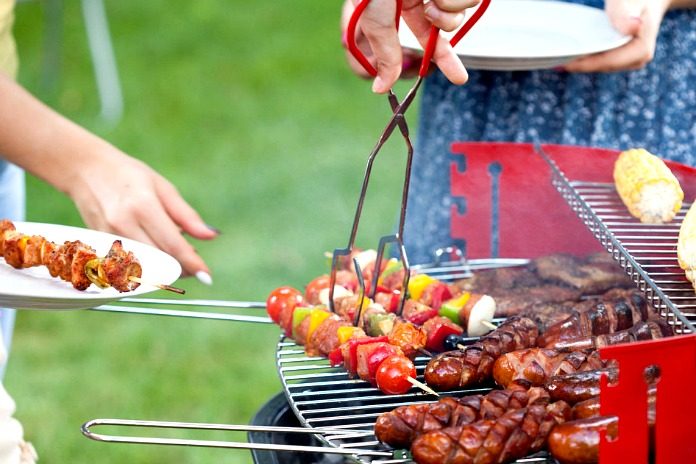
Now that summer has arrived, Oregonians are likely to do a lot more outdoor cooking and eating. The potential for food borne illness increases in July and August. Proper food handling and preparation is never more important as families flock to picnics, barbecues, and campouts. The Oregon Department of Agriculture’s Food Safety Program is offering seasonal advice on how to enjoy a problem-free summer of eating.
“The number of food borne illness outbreaks typically goes up in the summer because people are cooking outside, eating outside, and changing their habits a bit,” says ODA Food Safety Specialist Susan Kendrick. “You might have a different family member doing the cooking who normally doesn’t prepare meals the rest of the year. Everyone just needs to be more careful with food handling and preparation.”
When the cooking and eating takes place outdoors, people lose the convenience of a sink with running water or a refrigerator to keep foods cold. Nonetheless, most of the same rules for food handling, preparation, and storage apply for both outdoors and indoors.
Outbreaks of E. coli and salmonella in raw produce in recent years should not deter people from enjoying fresh fruits and vegetables this summer.
“We’d like to emphasize that you wash the produce when you get it home,” says Kendrick. “Even if it’s a cantaloupe– you aren’t going to eat the exterior rind but you are going to slice into it. So it’s still a great idea to wash the whole cantaloupe before eating it.”
Melons are grown on the ground where the rind can come into contact with animal waste used as fertilizer. When melons are cut, the knife may transfer bacteria to the inside of the fruit.
Unlike meats, there is usually no cooking step for fresh, ready-to-eat produce to heat and kill bacteria. However, the cook needs to be certain that raw meat is thoroughly cooked.
“It’s a good idea to thaw a product like hamburger in the refrigerator prior to cooking,” says Kendrick. “You want to make sure you don’t have a pocket inside the hamburger that is still frozen and may take longer to cook. The entire burger needs to be cooked evenly and thoroughly.”
Ideally, a thermometer should be used to make sure the proper cooking temperature of the meat on the grill is reached. But that isn’t always practical. At the very least, cutting into the meat, or close to the bone in the case of chicken, will ensure there isn’t any pink inside. Cooking temperatures should reach at least 165 degrees Fahrenheit.
Any time raw meat and fresh produce are both part of a meal preparation, cross-contamination is always a possibility. When handling any raw meat product– either taking it to a barbecue or another preparation area– make sure any tongs, spatulas, scoops, and the platter carrying the meat are all exchanged with a fresh, clean utensil or platter to carry the cooked product back to the table. Cutting boards used in food preparation are also a potential source of problems. Using the same board to cut up chicken and then to chop salad ingredients should be avoided. The raw products have organisms that could produce illness if spread to ready-to-eat products. Of course, a good cleaning and sanitizing of the cutting board after chopping up raw meat products will minimize the risk.
Handwashing is not as practical in the summer, but it is just as critical as other times of the year. If it’s possible to track down a sink, especially after handling raw meat, the risk of spreading bacteria to other foods and people can be minimized. While waterless hand sanitizers are available, nothing beats the old-fashioned method of using soap and running water to mechanically remove bacteria from hands.
Once the food is cooked, it’s important to tell everyone to come and get it.
“It’s really a good idea if you don’t leave the food out for more than two to three hours,” says Kendrick. “If you are camping or on a picnic and using a cooler, it would be great to not have leftovers. Just throwing left over food in the cooler can sometimes be a problem because it’s hard to bring the temperature down rapidly in a cooler. Again, we want to minimize the amount of time food is in the danger zone.”
Planning helps. Accurately assessing how much food to bring on an outing is a great way to avoid potential problems later. Another good idea is to offer foods that are shelf stable and don’t require preparation or refrigeration. Non-perishable food items like potato chips, dried fruit rolls, and uncut fresh fruits and vegetables will hold up well during picnics and camping.
Of course, the old expression “when in doubt, throw it out” is a good and easy one to remember.
Food recalls and food borne pathogen outbreaks have at least produced a more informed public. That could help make the summer of 2016 much more safe.
“People are definitely more aware of what they eat and more vigilant about preparing their food safely,” says Kendrick.








